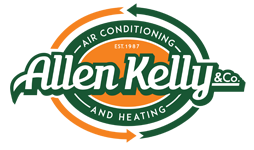What Should I Do When My Heat Goes Out in the Winter?
The onset of winter brings with it the cold winter temperatures. When it regularly dips below 30 degrees, the home must have a heating and air system that works properly. However, what happens when the heat suddenly goes out? How does one keep themselves and their family warm when the cold weather penetrates the indoors? Below is a guide on what to do when the heat goes out in the winter.
Check the Hardware
Often the heat goes out for relatively minor issues with the HVAC system. Here are a few things one can check before taking any other measures to deal with the heat going out:
Furnace
Many issues with the furnace are reasonably easy to fix. Homeowners can check the following to see if they can quickly resolve the issue and heat their home again:
- Check if the furnace is switched to “Heat.”
- If the furnace is producing heat, but it is not enough to heat the home, they should check the filter for any build-up and replace it if necessary.
- Check the pilot light. If the pilot is out, merely relighting it can resolve the issue.
Thermostat
The heat can go out if there is an issue with the thermostat. Here are some steps one can take to check if the thermostat is the source of the problem:
- Some thermostats run on batteries, and if the batteries run out, then the heat cycle will be stopped until they are replaced.
- Open the thermostat and check for dust build-up. Check that the date, time, and temperature are set and accurate on the thermostat.
- If nothing else works, try turning the breaker that thermostat uses off and on again.
Electrical Panel
Occasionally the furnace kicking on can blow a fuse or trip a breaker. Homeowners can check their electrical panel to see if there are any issues. If the breaker has been tripped, the homeowner can reset the circuit breaker. The switches will be labeled and the HVAC system should have a dedicated circuit. If the house uses a fuse system rather than a circuit breaker, replacing the broken fuse will fix the problem.
If none of these issues solve the problem or if homeowners are uneasy about how to perform any of these tasks, they can call a local HVAC repair company to help them check their furnace and get their heat working again.
Limit Loss of Heat
One of the first and most important steps one can take after checking the furnace is to mitigate heat loss. This can be done by taking a few key steps.
- Homeowners should find as many towels as they can and roll them up. Place these towels in areas where there may be a draft, such as the base of doors to the outside and on window sills.
- Hang blankets on each door throughout the house. This can help limit drafts and remind people in the household to open the doors as little as possible to minimize temperature loss.
- If it’s daytime and windows are facing the sun, homeowners can open curtains to allow more heat from the sun inside. Be sure to remember to close them as soon as they are not in the direct light. Otherwise, there is a risk of losing heat.
- Move all activities into one room, such as the living room or kitchen. Block all doorways with a blanket or other covering to trap as much heat inside that one room as possible.
Use a Generator
If the temperatures continue to drop, one should consider using a generator. Some homes are equipped with automatic generators that run off of the home’s existing heating fuel and power on as soon as the power goes out. However, these installations are costly and not always a feasible option.
More commonly, homeowners have a gas-powered backup generator that can power the essentials in the house, such as the fridge. If one chooses to use a gas-powered backup generator, they must not run it inside the house, garage, or any other enclosed area where exhaust can build up. Generators can be used to power portable space heaters temporarily.
Turn on the Portable Heater
Electric space heaters are not the only kind available. In an emergency, one can use kerosene or propane-powered electric heater. Those who use this method to heat their homes should be sure to take a few precautionary measures. Fuel-burning portable heaters give off hazardous fumes, so they must be used in a ventilated area, preferably with a cracked window. Additionally, these heaters should be kept at least 3 feet away from anything that could catch on fire.
Make a Fire
It may seem obvious for some, but a wood, pellet, or gas fireplace can help after the heat goes out. For those using a fireplace, it is essential that they have their chimney inspected and cleaned every year to avoid chimney fires and suit damage. Using wood or pellets sparingly, or taking breaks between heating cycles can conserve the fuel source until the furnace is fixed.
Get Cooking
If the power is still working and the home has an electric stove or oven, cooking is an excellent way to warm up the house when the heat goes out. Cooking a large meal will not only keep everyone in the house in good spirits, but the movement involved in food preparation can increase the body temperature and make a person feel warmer.
Nothing is scarier than the heat going out when temperatures are below freezing. However, homeowners do not have to panic when this happens to them. The steps outlined above can help them restore their heat as soon as possible. If they are not capable of fixing the issue themselves, local heating, ventilation, and air conditioning companies like Allen Kelly & Co. can help them get the heat back on.
